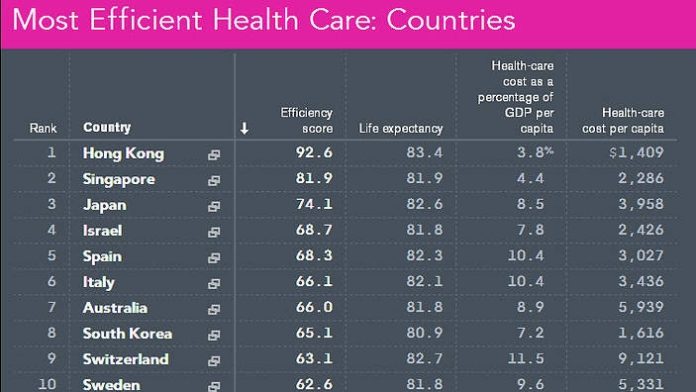How does #Australia’s #Medicare compare?
Australia’s universal health care scheme, Medicare (formerly Medibank) has undergone several changes since its inception by the Whitlam Labor government in 1975. Today, Medicare guarantees all citizens (and some overseas visitors) access to a wide range of health services at little to no cost.
Funded through a mix of general revenue and the Medicare Levy (currently 1.5% of taxable income or 2.5% for those on high incomes who don’t have private health insurance), Medicare pays a benefit to the user for various healthcare costs including:
-Doctors’ and specialists’ consultation fees;
-Tests and examinations your doctor orders for you;
-Eye tests carried out by optometrists; and
-Most surgical procedures
The benefits paid to patients under Medicare are generally 85% of the fee listed for the service in the Medicare Benefits Schedule.
How does Australia’s health care system measure up internationally?
Compared with health systems in other developed nations, Australia delivers above-average health outcomes and despite the poor life expectancy of indigenous people, still ranks well for healthy life expectancy. According to the CIA World Factbook, Australians have a life expectancy of 81.9 years.
“Australia’s got a good health system. In terms of cost of care, we’re below the average of other developed countries,” says Stephen Duckett, Director of the Health Program at Grattan Institute.
“In terms of the health cost share of the gross domestic product and life expectancy, we’re above the average of other developed countries. Overall, we’re doing quite well.”
In a Bloomberg study on the Most Efficient Healthcare Systems in the World released last year, Australia ranked 7th overall, with Hong Kong topping the list, closely followed by Singapore and Japan. Bloomberg ranked each country according to three criteria:
-Life expectancy (weighted 60%)
-Relative per capita cost of health care (30%); and
-Absolute per capita cost of health care (10%)
In 2010/11, health expenditure jumped 6.5% with an average of $5796 spent on the health needs of every Australian each year.
Australia’s healthcare investment as a percentage of GDP sits at approximately 9.3% per capita, a figure almost half that of the US who takes up 17.9% of its GDP.
Despite spending almost double what Australia spends, the US is flagging dramatically when it comes to life expectancy and overall wellness.
Gaining some ground with the Affordable Care Act, or ObamaCare as it is known, the US is still yet to implement universal health care, making it one of the only industrialised countries to do so.
Compared to the UK (14th), Canada (17th) and the US (46th), Australia’s health care system proves to be one of the most efficient in the world, but there are still improvements to be made.
“There’s no quick fix, you’ve got to look at changing payment mechanisms, look at electronic health records, look at addressing waste in the health system and potentially look at increasing revenue by increasing the Medicare levy,” said the Grattan Institute’s Dr Duckett.
According to Bloomberg, the top three most efficient health care systems all have varied models of universal healthcare with tight government control.
Bloomberg gave each country an efficiency “score”, with a score of 100 representing a perfect system:

1. Hong Kong – Government-funded universal healthcare system (public hospitals account for 90 per cent of in-patient procedures, although numerous private options are available).
2. Singapore – Healthcare system largely funded by individual contributions, however government regulation requires individuals to contribute a percentage of their monthly salary based on age to a personal fund to pay for treatments and hospital costs.
3. Japan – Universal healthcare with mandatory participation funded by payroll taxes paid by both employer and employee, or income-based premiums by the self-employed.
4. Israel – Universal healthcare and participation in a medical insurance plan is compulsory.
5. Spain – Universal healthcare as a constitionally-guaranteed right with no out-of pocket expenses (apart from prescriptions).
6. Italy – Mixed public-private system.
7. Australia – Universal healthcare that co-exists with private health care.
8. South Korea – Universal healthcare provided by Compulsory National Health Insurance.
9. Switzerland – Universal healthcare compulsory for all persons residing in Switzerland.
10. Sweden – Universal healthcare, decentralised and coexists with private health care.
It’s important to note that the data doesn’t necessarily reflect the best health care in the world, but is instead a measure of overall quality as a function of cost, according to Bloomberg.
